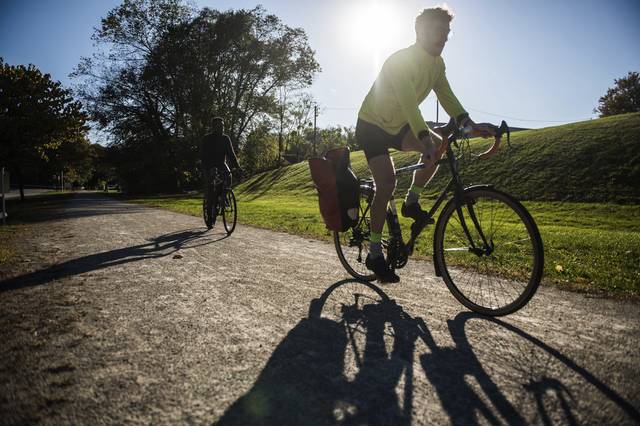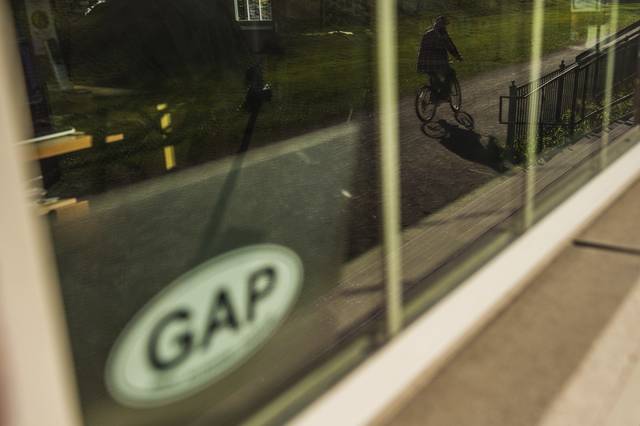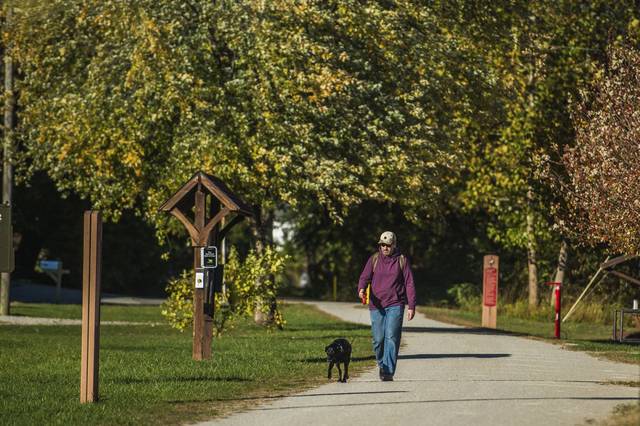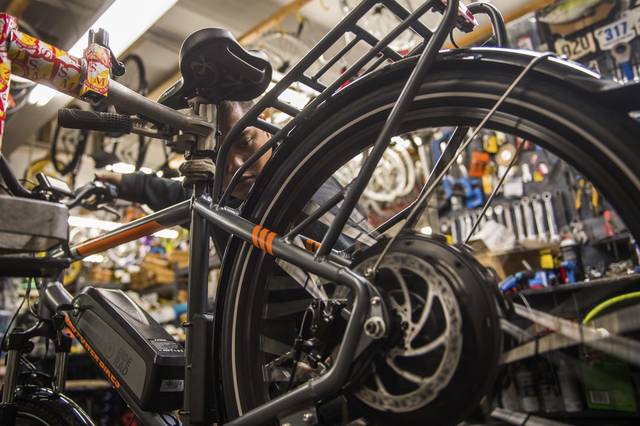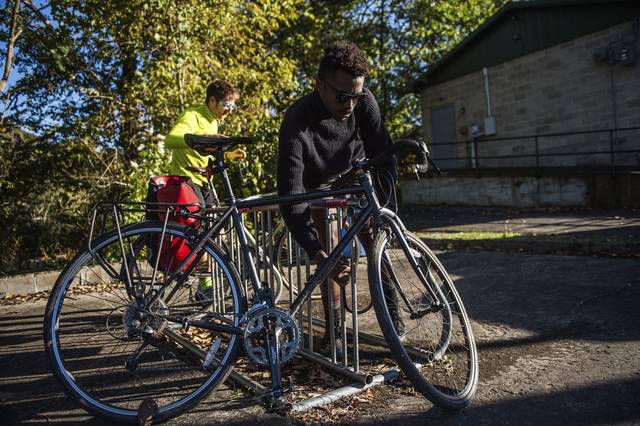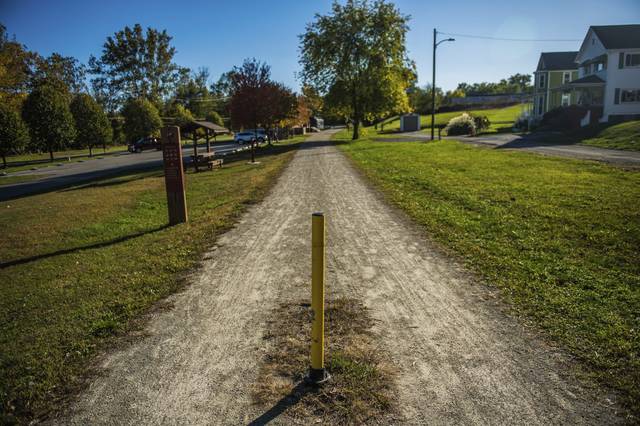Study: Rail-trails inject $930M annually into Pa. economy
Walking and biking trails developed along railroad rights-of-way contribute $930 million annually to Pennsylvania’s economy, and the regional Great Allegheny Passage trail is an important part of that figure, the Rails-To-Trails Conservancy estimates.
According to the conservancy’s methodology, that estimate is on the low end of spending along the state’s array of 186 rail-trails, which cover a total of 2,097 miles.
Issued this month, the conservancy’s report, “Active Transportation Transforms America,” estimates that more than 2,100 rail-trails pump a combined $10.6 billion per year into the U.S. economy. That’s based on past surveys over two decades that point to a range of $5 million to $7 million spent annually along each trail.
The report cites the 150-mile Great Allegheny Passage — which passes through Allegheny, Fayette, Somerset and Westmoreland counties in connecting Point State Park in Pittsburgh to Cumberland, Md. — as a prime example of a trail that has generated a substantial economic impact. A 2008 Great Allegheny Passage impact study estimated there was $40 million in trail-attributed revenue and $7.5 million in wages were distributed by trail-facing businesses, with the average overnight guest spending $124.
“Ours was one of the first studies of that scope and size,” said Bryan Perry, executive director of the Allegheny Trail Alliance that promotes the GAP trail. He’s been seeking funds in hope of initiating an updated impact study in 2020.
Meanwhile, there have been signs that the trail’s impact has continued to grow. From 2007-15, GAP trail towns saw a net gain of 65 new businesses, creating more than 270 jobs. In 2014, the most recent year for which data is available, an estimated 40% of sales were related to trail traffic.
Perry said he has noticed a trend of business start-ups over the past few years in two sectors related to the trail, including “businesses that are in the shuttle and transportation sector. These are folks you might pay to haul your camping gear from town to town,” so that “riders are free to ride their bikes without being encumbered.”
Trip planners and tour operators also are on the rise, Perry said. “They plan your trip from end to end, and they do all the reservations,” he said. “Those are newly created and highly successful businesses.”
A study of GAP trail usage in 2018, authored by Andrew R. Herr, associate professor of economics at Saint Vincent College, estimated 946,284 visits that year. That number was down about 7% from nearly 1.02 million visits estimated in 2017 — a difference Herr attributes to the extreme precipitation in the summer of 2018, which led to mud and rock slides, fallen trees and flooding that caused numerous trail blockages.
Data from this year’s trail usage counts will be collected in December for analysis, Perry said.
The West Penn Trail, which stretches 17 miles from Blairsville to Saltsburg along the border of Westmoreland and Indiana counties, is visited each year by an estimated 40,000 people, according to Laura Hawkins, who has worked to promote trail connections as greenway coordinator for the Altoona-based Allegheny Ridge Corporation.
“We are seeing some of the local businesses in Saltsburg marketing themselves to trail users and taking advantage of the fact that the (Kiskiminetas and Conemaugh rivers) and the trail are there,” she said.
More than 400 people, on an average day, use the Westmoreland Heritage Trail, according to board Vice President Rob Cronauer. “Our peak user-ship was on Memorial Day,” he said. “We had over 1,200 folks on it that day,” counted on a section of the trail near Murrysville.
“We expect that to increase, given that the trail is getting noticed by the public,” he said.
The trail covers 18 miles, in two segments — between Saltsburg and Delmont and between Export and Trafford. Eventually, planners hope to bridge the gap, extending the trail to 22 miles.
To the east, in Indiana and Cambria counties, the Ghost Town Trail this year celebrated its 25th anniversary. It has grown from 12 miles to 46 miles during that time and annually attracts about 80,000 visitors. A survey in 2009, when trail visitors totaled about 75,500, estimated those users spent about $1.7 million on overnight accommodations and items such as meals, beverages and ice cream.
Cars hailing from multiple states can be seen parked at the trail, according to Cliff Kitner, executive director of the Cambria County Conservation and Recreation Authority, which owns the sections of the trail in Cambria County.
Jeff Himler is a TribLive reporter covering Greater Latrobe, Ligonier Valley, Mt. Pleasant Area and Derry Area school districts and their communities. He also reports on transportation issues. A journalist for more than three decades, he enjoys delving into local history. He can be reached at jhimler@triblive.com.
Remove the ads from your TribLIVE reading experience but still support the journalists who create the content with TribLIVE Ad-Free.

